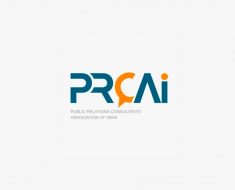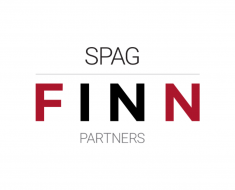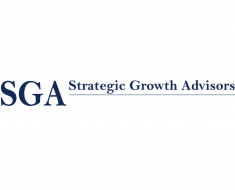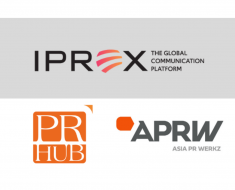Public Relations body, Public Relations Consultants Association of India (PRCAI), has unveiled its annual industry report today. The report reveals an upward trajectory estimated INR 2100 crores registering double-digit growth year-on-year despite Covid-19. Three out of four of the country’s PR firms expect 10% growth in the 2022 fiscal year.
The 2022-23 Study of Public Relations Insights, Nuggets and Trends [SPRINT 2022-23], paints an optimistic picture of the changing PR landscape. The study also found that PR consultancies in the country are making a considerable investment in strengthening their regional outreach as clients reach out to consumers in tier II and III cities. However, the report revealed that the high employee attrition rate in the industry at 20% is a pressing issue that may hamper the quality and ability of client service.
Research firm Ipsos surveyed 60 decision makers across consultancies and in-house communicators, who noted that while the Indian PR industry is overall in sync with its global counterparts, thanks to India’s gradual integration with the world economy, some trends are uniquely Indian.
PRCAI worked with Astrum, a specialist reputation advisor, to generate industry trends and insights and one of the key findings of the study is the positive shift in the way PR is perceived now by top stakeholders. With the private sector, start-up economy and unicorns fuelling growth in India, the C-suite is increasingly recognising the value of PR professionals.
Eight out of 10 respondents said that India Inc. leadership is working closely with its corporate communications team to devise strategies for brand communication, while 80% of corporate communications head report directly to the CEOs.
This shift is evident by another fact that 72% of clients expect consultancies to play a strategic role, with similar proportions reporting increasing integration of digital and traditional PR, along with more adoption of technology and automation.
Atul Sharma, President, PRCAI said, “PRCAI is striving to build a more professional, ethical, and prosperous PR industry. SPRINT 2022-23, is a step in that direction and reveals how the industry professionals are increasingly becoming indispensable to India Inc., not just as supporters but partners in growth.” He adds “We are now being recognised as strategic consultants who help solve business problems and for this transformation to sustain, technology and talent have to complement each other most effectively.”
Other key trends In SPRINT 2022-23:
- Growing role of regional PR: Brands are now asking for a more focused local PR strategy for smaller cities. With consumer spending going up in tier 2 and tier 3 cities, brands want their communication to be targeted. To meet this demand, consultancies have amped up their regional presence by either opening local offices or partnering with affiliates to deliver the desired results. The report noted that over the last three years, the regional spends for consultancies has increased from 15% to 19% and is expected to increase to 25% in the next 3 years.
- Digital first: In this hyper digital era, nine out of 10 clients has to deal with fake news in the last year and trust and authenticity in communications have taken over visibility. 80% agree that company handles as a source of credible news will continue to be important. While 75% feel that newspaper space is shrinking, three out of five see an increase in the share of paid news across digital media. Media relations are losing revenue share but continue to be a significant contributor at 68%, in the next three years its significance may drop to 48%.
- Increasing PR in the marketing pie: An encouraging trend qualifying integrated communications is that companies in India are now allocating a higher proportion of their marketing budget to PR services. PR share of annual marketing budgets of clients, saw a seven percentage point increase in four years, expanding from 10% in 2019 to 17% in 2022.
- Broadening services portfolios: The post-pandemic scenario points out that clients turned to PR to effectively communicate with multi-stakeholders – both internal and external where 93% ranked crisis handling as most important, followed by public affairs and advocacy at 89% and internal communications at 85%, becoming the top three sought-after services in the PR realm. Clients are now looking to build trust and reputation and seeking PR expertise across a diverse range of areas including handling disinformation, paid media, and digital and content management, thus widening the PR scope.
- The PR measurement efficacy: SPRINT 2022-23 revealed that 95% of respondents measure their PR efforts, with over 80% reporting that measurement metrics are finalized at the beginning of the campaign, a positive step to drive effectiveness. Even more importantly, three out of five respondents agreed that PR measurement and evaluation is shifting from AVE to other metrics, a long-overdue development that can only support the industry’s overall value. No doubt, this was validated in the study showing around three in five CFOs or CEOs require measurement objectives in signing off PR budgets.
Talent shortage is PR industry’s biggest headwind
- Talent scarcity: The survey insights noted that the industry has been witnessing attrition of more than 20%, higher than the global standards. 74% of respondents agreed that more than attracting talent, its retention at entry and mid-levels is becoming increasingly difficult. For the Millennials, the balance between career aspirations and better quality of life is no longer an either/or choice. Higher compensation and the need for work-life balance are reasons for frequent job shifts, besides post Covid-19 phenomenon reflective of different life goals of millennials changing careers path outside PR to opt for alternate career choices like creating music bands, teaching in rural areas, and taking up entrepreneurship.
- Newer hunting grounds: SPRINT study found that most staff are still recruiting from mass comm and journalism institutes, though new hunting grounds are emerging with increased hiring from graduate colleges and MBA institutes. The study highlighted that 70% of respondents agreed that there is a shortage of skill sets for emerging areas and special needs like public policy and ESG. Two out of five employers are hiring sector-specialised recruits to meet growing specialised needs in the PR industry.
- Higher need to upskill people: The study shows it is under-investment in talent development and firms are spending less than 1.5% of their revenues on training, making a strong case for immediate attention to prioritizing constant investment in people that will pay dividends in the long run. PRCAI’s writing skill program and AIPR accreditation in 2022 is a step in the right direction to take this challenge head-on at an industry level.
- Bridging Client-Agency Expectations: A bridge needs to be built between client and consultancy expectations. While clients are willing to pay for higher quality talent and expect PR professionals to come with rich experience in public advocacy, legal expertise, and other key subject matters, 83% of consultancy respondents revealed that the client budgets are not increasing at the same pace as consulting expenses.
Deeptie Sethi, PRCAI CEO, concluded, “PRCAI’s SPRINT 2022-23 report is a testament to the progress of our profession as today, India is recognised as a developed PR market that is integrated into the global economy. PR professionals are increasingly called to play a strategic role with our expertise in building persuasive narratives across a full range of private and public enterprises. We can further strengthen our position by upskilling and reskilling to leverage technology to our advantage and integrate paid, owned and earned media platforms into our programmes.”








